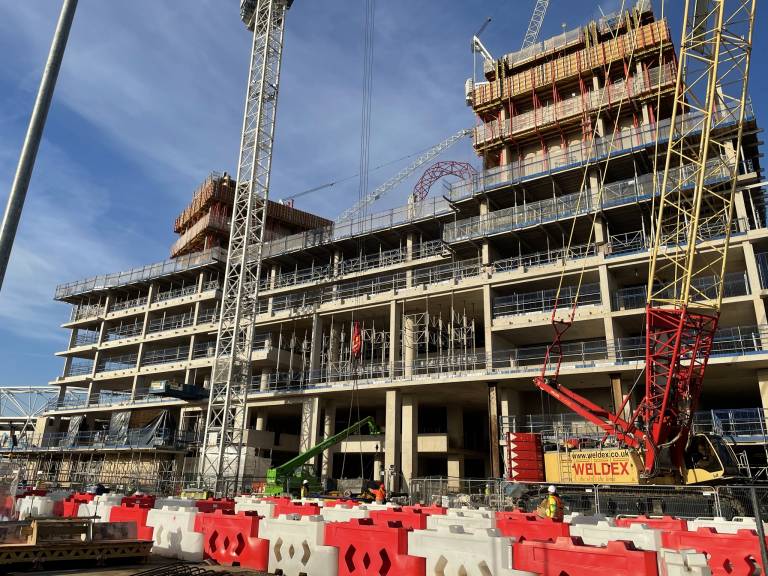UCL East featured in OnLondon article about East Bank
7 February 2021
Dave Hill, founder of OnLondon, published this week the first of a series of articles on Queen Elizabeth Olympic Park: How will the East Bank cultural quarter work? He talked to UCL East Director Prof Paola Lettieri for his first piece. Excerpts below.

The Director of UCL East is Professor Paola Lettieri. She stresses that this major new chapter in the university’s history, unfolding as it approaches its 200th anniversary, is squarely in the tradition of its “very particular commitment to society”. Founded as London University in 1826, it was the first such institution in the capital to be secular and to admit students of any religion, and it believes itself to be the first university in England to admit women. Inspired by radical ideas, the university’s Bloomsbury location was, at that time, seen as an outlying eastern part of the city, much as Newham, the borough East Bank falls into, is today.
Lettieri describes UCL as fundamentally engaged with the “big challenges” of modern times, listing these as “public health, inequality, economic development, social justice, cultural understanding, ecological transformation and, of course, sustainability” – issues of obvious and urgent relevance to a part of east London that has been so badly hurt by the pandemic. She underlines that a desire to build links with local people is embedded in the architecture of the new campus, describing “spaces in which the community will be welcome to work with us, and also to book spaces that they can use for their own activities and meetings.”
UCL East’s academic offer too is being shaped with local people in mind. “We are, as we speak, developing the content of some new modules we will be launching to provide meaningful opportunities for the community to work with us, whether this is on research projects or outreach activities,” the professor says. “We are using UCL East as a catalyst for positive change and developing a new approach to community engagement.” Provision of training and skills and service procurement are also to be tailored to that end. “Thousands of hours” have already been spent with east London school pupils and teachers as part of a range of engagement activities, Lettieri adds.
Another part of the East Bank engagement architecture is the Foundation for Future London, a charity established in 2015 to raise and distribute funds and help weave the East Bank into the fabric of east London lives in the four boroughs – Newham, Tower Hamlets, Hackney and Waltham Forest – whose meeting point the LLDC’s territory straddles.
 Close
Close

